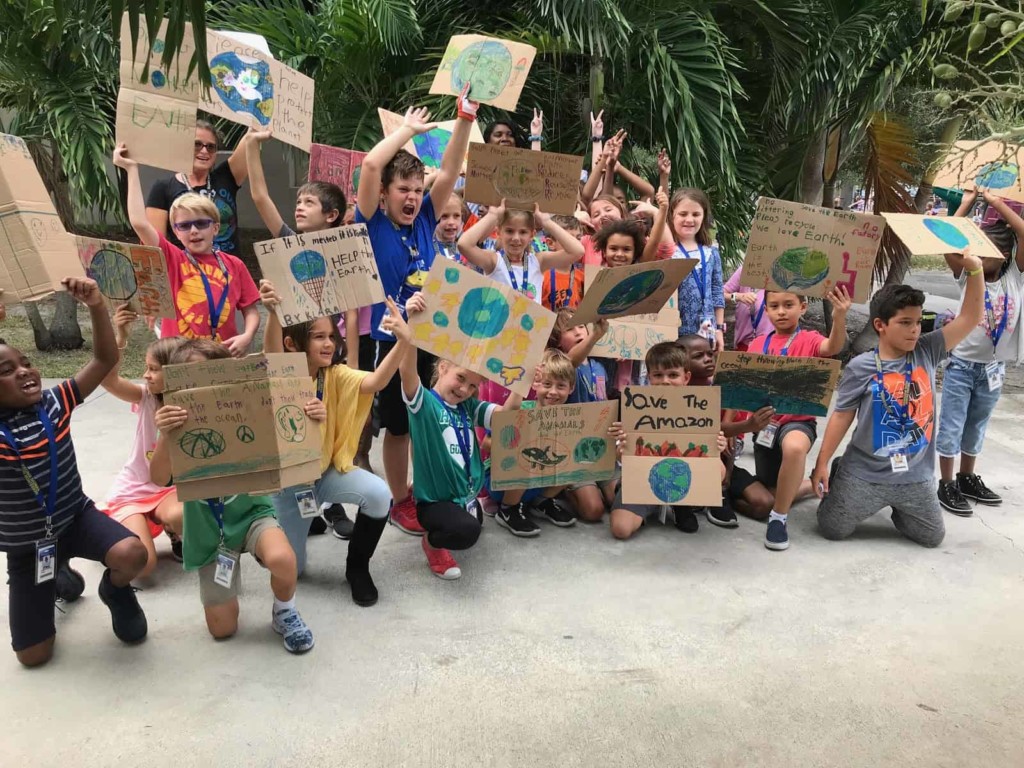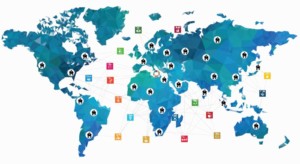Empowering Students Through Choice, Voice and Action

By: Kristen Thorson and Erin Gohl
From year to year and generation to generation, shifts in culture, shared historical experiences and advances in technology change our individual and collective perspectives. Small changes accrue, resulting in an evolution of our social and economic environment. Issues and challenges with a national or even a global impact arise. Some issues unite, some divide and some redefine communities.
A generational identity is forged for youth emerging into adulthood from the cultural cauldron of significant events. Some young people become leaders by framing issues with an honesty unburdened by the excuses that previous generations have accumulated through fear and equivocation. These emerging leaders act with a passion that inspires people across cultures and generations to unite.
The last several years and even just the past few weeks have provided us with incredible examples of youth advocacy for a wide variety of issues. From Greta Thunberg’s plea for environmental action to Malala Yousafzai’s advocacy for girls’ education to Parkland, Florida teenagers leading thousands in a march to demand action on gun control, these young people have proven that kids are capable of promoting big ideas and driving substantial change.
These examples need not be exceptions. Adults must recognize that children can and should participate and contribute to our social and civic dialogue. It’s time to acknowledge that kids, even those just learning to read and write, have valuable insights. We must create space for them to develop their thoughts, share their opinions and take action where they see a need.
Any adult who works alongside young people can help them develop into thinkers, problem-solvers, and doers. We must offer choice so that children have agency in their lives. We must encourage voice so that they can share and advocate for their needs and the needs of others. And we must seed, nurture, and follow our kids’ desire to make a difference in the world. Both home and school can be fertile ground for this kind of growth and development.
Choice
From a young age, we can empower children by teaching them that they have the ability to shape their lives. Subtle shifts in offering options to kids can create a dynamic in which children are taught that their feelings, thoughts, and opinions are valued. Having choice promotes feelings of control in their lives and in their interactions with the world. When children are able to act with self-determination in influencing the timing and sequence of required tasks or choosing to complete work individually or collaboratively, they feel empowered. These seemingly insignificant differences may seem subtle to adults, but to kids, they are powerful.
At School: At a basic level, teachers may offer a choice between sitting on a chair or sitting on the carpet to complete a task. They may let students decide when a particular task gets completed, including the order and sequence of their work. Older students may be given the authority to choose whether to present the information they have learned in a PowerPoint presentation, written report or creative diorama. These types of choices allow for multiple pathways to the same learning objectives.
At Home: Parents may let their kids choose which vegetable they would like with dinner or if they brush their teeth before or after they read a story. When older children are faced with decisions about electives, parents may let them dig into their own feelings to make that choice, even if it falls outside of the parent’s expectation. Letting children make choices and then seeing the results of those choices at a young age prepares them to anticipate potential consequences as they get older and face more substantial choices.
Voice
Gone are the days of the old adage that children should be seen and not heard. In order to prepare our kids to be productive members of society, we must teach them that their thoughts and opinions matter and should be constructively shared with those around them. Inviting young children into conversations allows them to develop their voice. And listening to what they have to say bolsters the power of that voice.
As children grow older, a strong voice is a productive channel for self-development. Allowing kids to speak their thoughts and opinions and have those words heard, respected and validated allows them to figure out who they are, what they believe in, and to embrace their identity.
At School: Facilitating learning experiences that encourage students to talk with one another provides opportunities for kids to practice using their voice. Within these experiences, educators can teach students words and phrases to accurately convey their thoughts and opinions. Teachers may model active listening, explain how to express a connection to what another has shared, or give examples on how to clearly articulate an opinion. To further the development of voice, educators may choose to include students in individual planning meetings or learning conferences. Students often have unique insights about their own learning preferences and tools that lead to greater success.
Writing can also be an effective tool for students to develop and practice using their voice. Young children may be encouraged to write notes to their families with reminders of upcoming school celebrations or pajama days. This type of task sets the precedent for kids that they hold important information and can share it.
At Home: While reading at home, ask children their thoughts and opinions on the subject matter. When they want to tell you about their amazing Minecraft creation for the fifth time, give them space to share. As children get older, ask them about their thoughts on global issues or current news stories. Letting kids into conversations on these real-world dynamics establishes them as part of the dialogue and as contributors to solutions.
Action
Children do not have to wait until they are grown adults to make the world a better place. Kids have many skills and capabilities to meaningfully effect change. And sometimes they see the issues and the path to change more clearly than the adults. They are not intimidated by the size of the problem or frustrated by historical inertia. When adults say things cannot change, a child often responds, “Why not?” We must recognize their capabilities and desire to make change so that we empower, rather than dismiss, their advocacy with refrains to “wait until they’re older.”
At School: Do not be afraid to introduce young students to big issues in an age-appropriate manner. Answer questions, provide information and share models through books and other multimedia of people who have used their lives to make a difference in the world. When students rally around a cause, invite them to brainstorm actions they could take now to move the cause forward. And when there is a global movement for a change they believe in, work with students to find an accessible way for them to participate. This might include a small protest march during the school day or a letter-writing campaign.
At Home: When children come to you with a concern or an issue they believe needs to be changed, listen. Rather than brushing off what can sometimes seem insignificant, brainstorm with them a path forward. Give children opportunities to research causes and issues, and provide them with access to expertise by visiting a local library or museum for resources or allowing them to email an expert who lives outside of the local area. Facilitate connections with peers who share similar passions and values and encourage them to find ways to volunteer their time and energy to make an impact.
Building a Better World
When a toddler excitedly opts for carrots over peas to have with dinner or a preschooler feels triumphant when offered a choice of what to do first before bedtime—brushing their teeth or reading—we can see the empowerment that comes from having agency over outcomes. When we watch our children and students’ faces light up as they talk about something they are passionate about, we should be reminded that our children have unique perspectives and can enrich the content of conversations and thinking by articulating those thoughts and opinions. And when we give young people the opportunity to transform these opinions or concerns into action, we teach them that they can affect change.
These pathways for growth benefit the individual development of a child. They nurture social-emotional health and development, encourage critical thinking and problem solving, and help fortify a student’s sense of self. They also can serve to benefit the broader social, school, and civic community in which students participate. Having an engaged citizenry who seeks productive dialogue and feels empowered to make positive change when a concern manifests makes our world a better place—both today and in the future.
For more, see:
- In Broward County, Student Voice Impacts the Classroom and Beyond
- 5 Ways To Include Student Voice In School Change
- Choice But Also Rigor: Four Tips For Student Engagement
Stay in-the-know with innovations in learning by signing up for the weekly Smart Update.
Photo credit: Erin Gohl








0 Comments
Leave a Comment
Your email address will not be published. All fields are required.